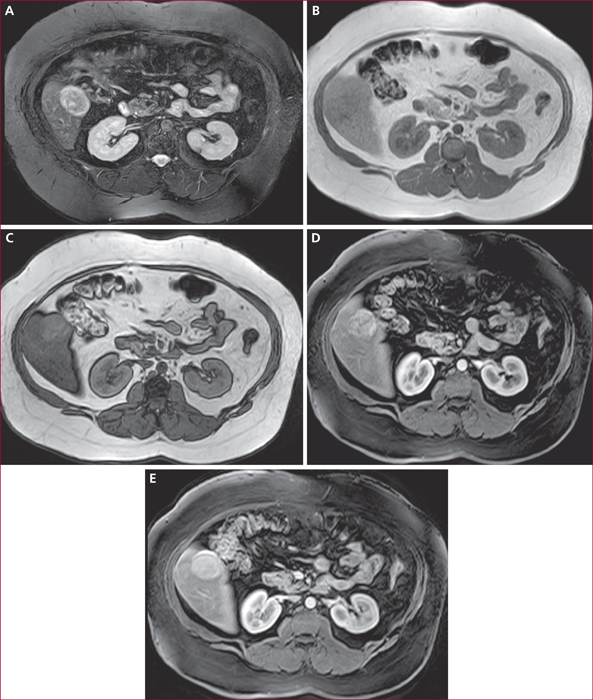Hépato-Gastro & Oncologie Digestive
MENUImaging of benign hepatocellular tumors Volume 22, issue 8, Octobre 2015
service d’imagerie,
100 Boulevard du Général Leclerc,
92110 Clichy, France
- Key words: benign hepatocellular tumors, focal nodular hyperplasia, hepatocellular adenoma, MRI, contrast-enhanced ultrasound
- DOI : 10.1684/hpg.2015.1200
- Page(s) : 739-45
- Published in: 2015
Focal nodular hyperplasia (FNH) and hepatocellular adenoma (HCA) are a variety of solid hepatocellular lesions mostly found in the absence of underlying chronic liver disease in young patients especially women. HCA is no longer to be considered as a unique lesion but as a recollection of different entities sharing common points but most of all separated by different typical morphological aspects. Accurate diagnosis is of clinical importance as the management is most of the time conservative for FNH, whereas HCAs expose patients to hemorrhage and malignant transformation, and may lead to a more invasive treatment, mainly surgical resection. Moreover, the different HCA subtypes expose to different risks of complication. The best imaging techniques for the differentiation between FNH and HCAs, and for subtyping HCAs are contrast enhanced ultrasound, and magnetic resonance imaging, as specific combinations of imaging features have been associated with the different lesions. They should be considered as complementary examinations. Atypical, multiple lesions, and lesions containing fat represent diagnostic challenges. Recently, MR hepatospecific contrast agents have been shown to be useful. Biopsy should be always performed in case of uncertain diagnosis, to reach a final diagnosis and avoid unnecessary invasive treatment.



